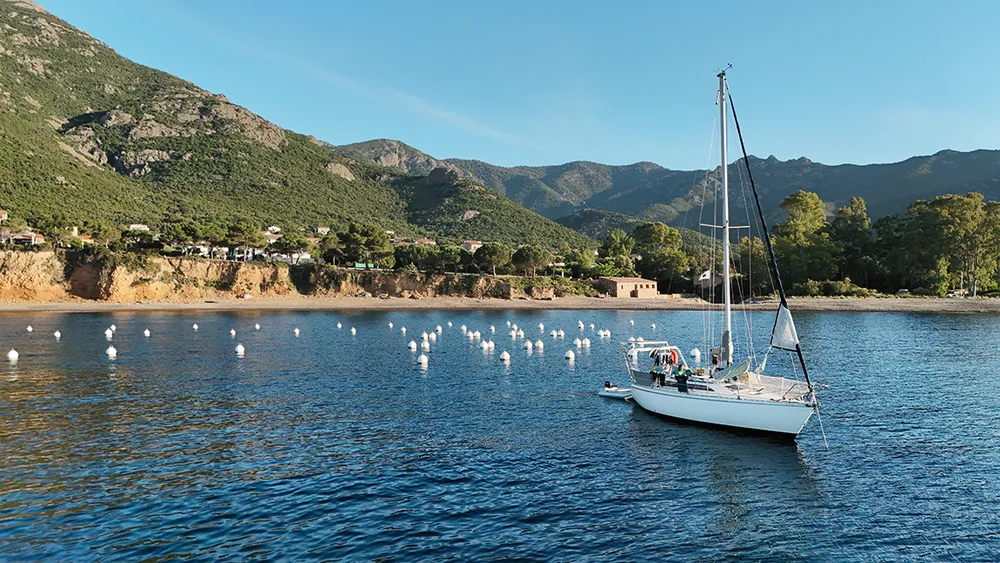Corsica may be close to the mainland, but for sailors looking for unspoiled landscapes, emerald-colored bays and wild nature, the island is a paradise. As soon as you arrive, its magic unfolds. The west coast in particular is impressive and varied. It is truly not stingy with its charms! Warm winds gently billow the sails and caress the sand-lined rock formations. A picture of breathtaking beauty that no one can resist. Once you’ve been here, you’re guaranteed to come back.
Text and photos: Bernadette Salignac
Corsica’s formation and the beauty of its west coast are due to plate tectonics. Millions of years ago, tectonic forces separated Corsica from the mainland, causing Bonifacio to bid farewell to Cassis and Porto to mourn the Esterel Mountains. Throughout its turbulent history, the proud Corsican people, as they call themselves, have always been careful to ensnare “Callisto the Beautiful”. The courtship was worth the effort. The nymph has Corsica to thank for its overwhelming sea and mountain landscapes, the likes of which are hard to find anywhere else in the Mediterranean. There are neither excesses of concrete like in Spain nor privatized seashores by the parasol mafia.
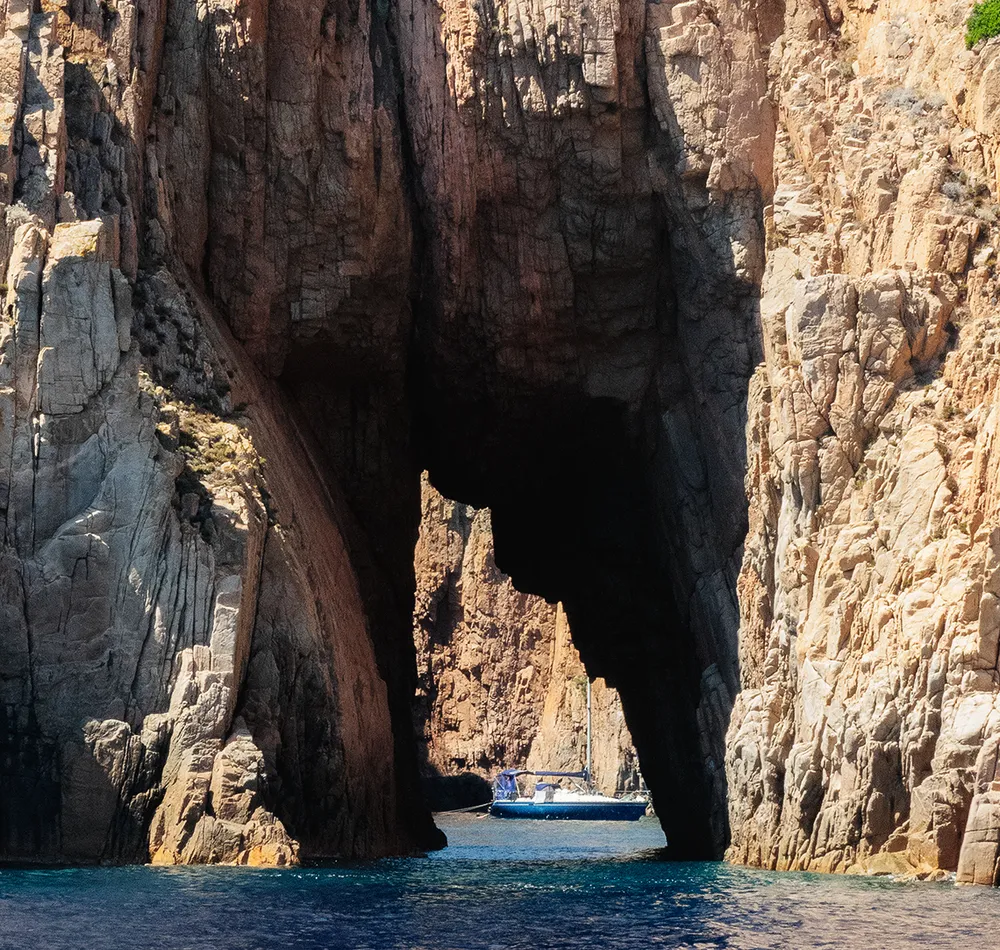
OF THE CAPU ROSSU MAKE YOU FEEL TINY.
Instead, a good balance has been maintained between tourism and environmental protection, with sailors still having a lot of freedom today. They can enjoy the dazzling paradise in disbelief, let themselves be caressed by the beguiling scent and marvel at the living nature. From June to September, wind and sun beckon out onto the water, especially between Galeria and Figari. This 70-mile stretch of coastline offers a variety of stops in a wild and romantic natural setting. If you are looking for magnificent landscapes, lots of nature and variety, this is the place for you! Harbors are rare, but there are some very well-protected anchorages where sailors and boats can feel safe. They are rarely overcrowded, sometimes even empty. The longer the evening lasts, the more privileged you feel. At dusk, the balmy air from the mainland carries the scent of curry herbs. The setting sun gives way to a deep black night in which you can count the Perseids thanks to the lack of light pollution. When the distant call of a scops owl mingles with the lapping of the waves against the hull, the scene is perfect.
From Galerie to Figari, the Corsican west coast is an experience for young and old. Whether experienced sailors, sailing novices or children who are perhaps already tired of life on board – the bay hopping delights everyone, leaves lasting impressions and awakens the desire for further trips in Corsica, off the north or south coast, for example.
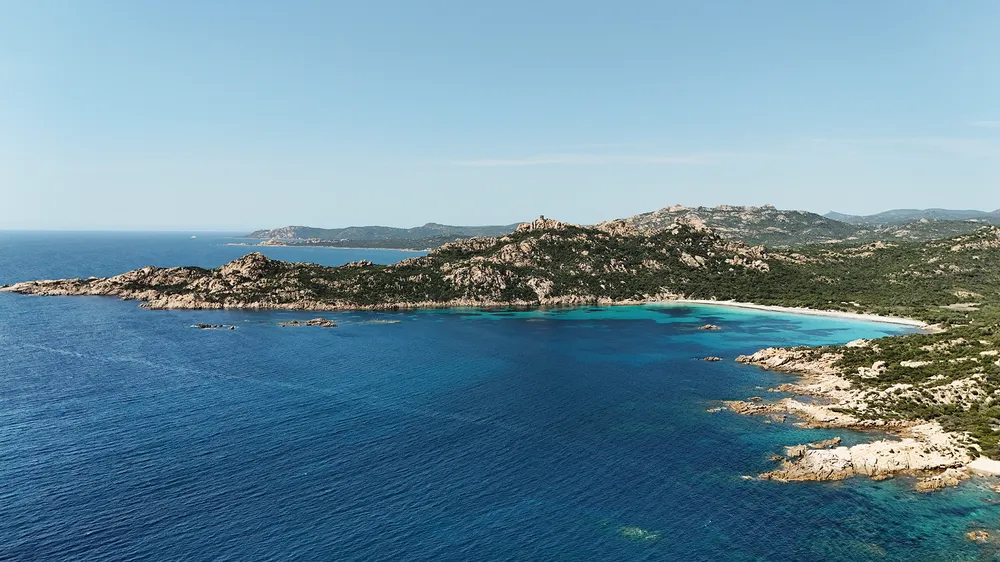
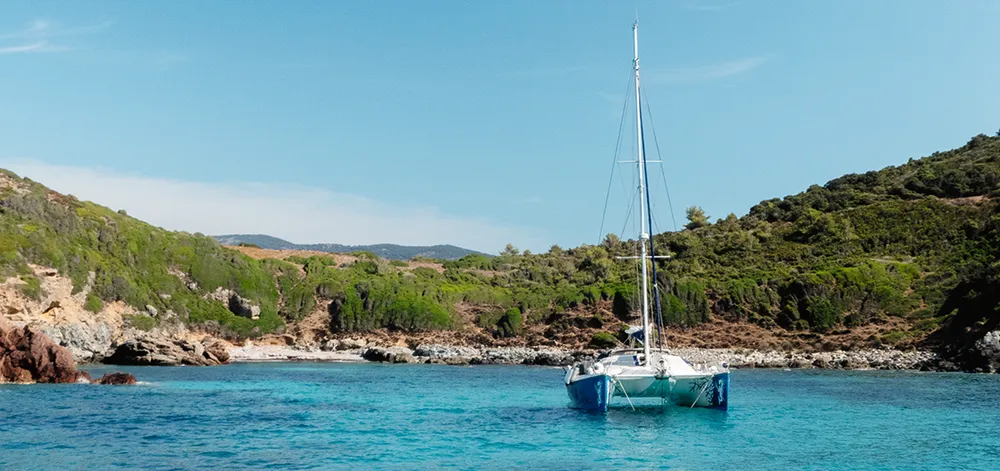
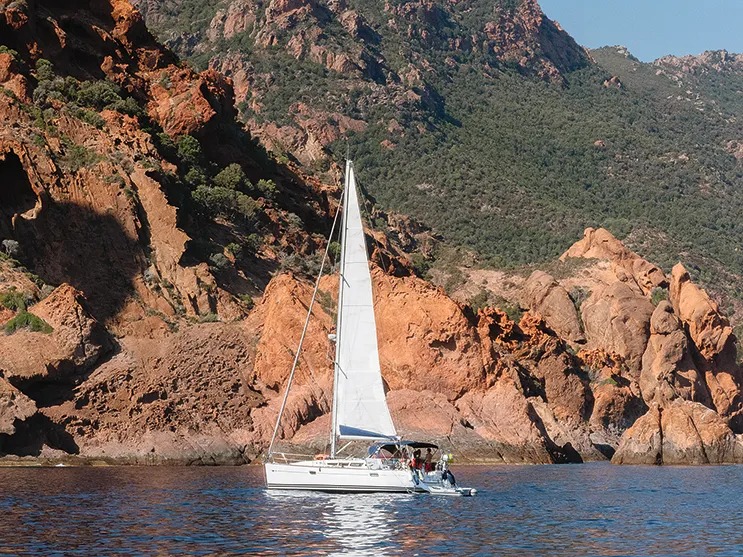
Galeria, timelessly charming
Galeria is a sleepy village of 400 people at the end of a wide bay in the delta of the River Fangu. It marks the northernmost point of this fascinating stretch of coastline. In ancient times, it was the scene of alpine excursions and in the 18th century the village became famous for its timber. However, as it is difficult to reach by land, its development came to a standstill. And that’s a good thing! Galeria exudes an almost strange tranquillity. The rustic village seems to have fallen out of time. If you want to soak up the almost mystical atmosphere, you can anchor in the sand at a depth of five to six meters or tie the stern and bow to buoys to prevent the yacht from rolling too much in the bay, which is open to the west. There are never more than ten boats here, even in August. No concessions are made to tourism: sea balls, which form from torn-out rhizomes of seaweed, share the coarse sandy beach with cows. In the Cabane du Pêcheur, freshly caught lobsters are served with a delicious citrus sorbet under the watchful eye of the landlord. Be sure to try it! There are even more ruminants on the way to the bakery or supermarket in Galeria, where they stroll leisurely along the sidewalk. The peaceful country walk is a welcome break before or after the strong emotions in Scandola.
Majestic Scandola
Punta Scandola, around four nautical miles south of Galeria, has been a nature reserve and UNESCO World Heritage Site since 1975. Corals, ospreys and the constant discovery of new marine species make this place unique. The headland has long attracted admiring glances. It is something special in every respect, a small piece of extraordinary Corsica that shines in all shades of ochre and glows a fiery red in the evening light. Up close, the cliffs reveal their astonishing architecture, sometimes pitted, sometimes monstrous, sometimes sympathetic. Basalt columns, caves and tunnels defying erosion give the coast its rugged appearance. The bizarre granite landscape magically attracts sailors, often to dangerously close distances. They explore the rock formations in amazement and with a slightly queasy feeling. Anchoring is permitted in some places during the day, but is only recommended in good weather. After three nautical miles at walking pace, staring spellbound at the rugged coastline, the natural spectacle is over, but not forgotten. Head south. The magnificent follows the grandiose: the Gulf of Girolata, framed by glowing red rock massifs, dense maquis and high mountains, untouched by any human development. The sight of the red rock needles, bumps and currents, which look as if they are still in motion, amazes even the most hardened sailors. At the end of the gulf, just north of Girolata, there is a very popular anchorage, but unfortunately you often get wet due to the strong gusts. It is best to leave the now all-too-familiar and correspondingly overcrowded village of Girolata to the left and head straight on to the astonishingly wild, turquoise-blue Cala Tuara. This secluded spot is soothingly peaceful. The anchor lies 5 to 8 meters deep in the sand, the boat is protected from wind and waves and the portholes are wide open to the gulf. Only the wasps can be a bit of a nuisance – a reason to opt for vegetarian dishes in the evening.
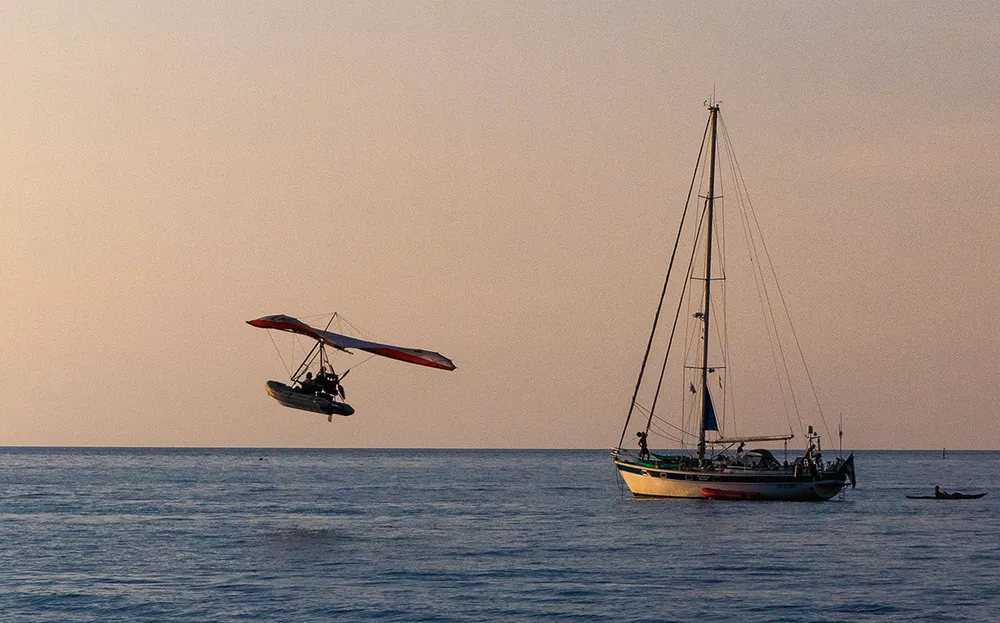
Sea of flames at Capu Rossu
The deep, wide Gulf of Porto borders the Gulf of Girolata. Losing yourself in it is a wonderful feeling. The beach at Ficaghjola, where fishermen from the village of Piana in the hinterland used to cast off, beckons for a lunch break. To the south of the gulf, Capu Rossu stretches out into the sea like a final red spur against the deep blue expanse, crowned by an old watchtower reminiscent of the Genoese occupation of the island. On both sides of the gulf there are anchorages sheltered by piles of stones. To the north, at the foot of the cape, caves, arches and tunnels swallow up the tourist boats, while to the south the Cala di Palu forms a basin with idyllically clear water. It is not only a unique landscape, but also one of the best-protected bays in the region. With 5 to 8 meters of water under the hull, you would love to leave your anchor in the white sand forever. During the day, hordes of tourists with their Zodiacs invade the anchorage, but in the early evening it empties out again, giving sailors magical moments. The three-hour climb to the Capu Rossu tower is well worth the effort: from there you have a breathtaking view of the surrounding area.
A little further south is the wide bay of Arone with its long, chic beach. Here, the sand is polished every morning, guests can eat in three restaurants and moor at many buoys. Under the watchful eye of the Capu Rossu tower, a magical landscape spreads out with warm splashes of color. Venus, the mega yacht owned by the late Steve Jobs, has been stopping in Arone every summer for several years. The place is ideal for a relaxing moment on the beach and a good dinner, for example in the Café de la Plage, which was built entirely out of driftwood in the countryside. The Breton chef prepares tasty, artfully presented dishes from local produce, while the very obliging William transports the initially hungry, then full sailors back and forth between the beach and the anchorage in the north of the bay. It offers space for a dozen boats, which can anchor on sand at a depth of 8 to 10 meters in fine to moderate weather and with only a small swell. The small Topidi bay to the south of Arone is also worth a visit. This almost unknown gem has a turbulent history. In 1943, the resistance fighters of the Pearl Harbor mission landed a submarine here.
Last act: white bays and azure blue sea
In order not to break the magic of the journey and to spare the mental constitution of the city dweller turned Robinson Crusoe, we head straight to Porto Pollo on the Gulf of Valinco. The 30-nautical-mile leap is worth it! It leads past fantastic anchorages off Cargese or the Iles Sanguinaires. Porto Pollo, with its small harbor, main street and beach, gently brings the somewhat overgrown sailor back into social life and offers the opportunity to stock up on provisions.
Cupabia and Campomoro on the northern and southern edges of the deeply indented gulf are well protected from the open sea, so you can enjoy the paradisiacal beaches with their golden sand and exotic-looking black rocks without a care in the world. On the northern shore, they extend all the way to the harbor entrance of Propriano, where you can get your first taste of city air. At the back of the gulf, with 7 to 8 meters of water under the bow, it is easy to linger, for example in front of the sandy beach of La Calanca with the town nestled against the hill in the background.
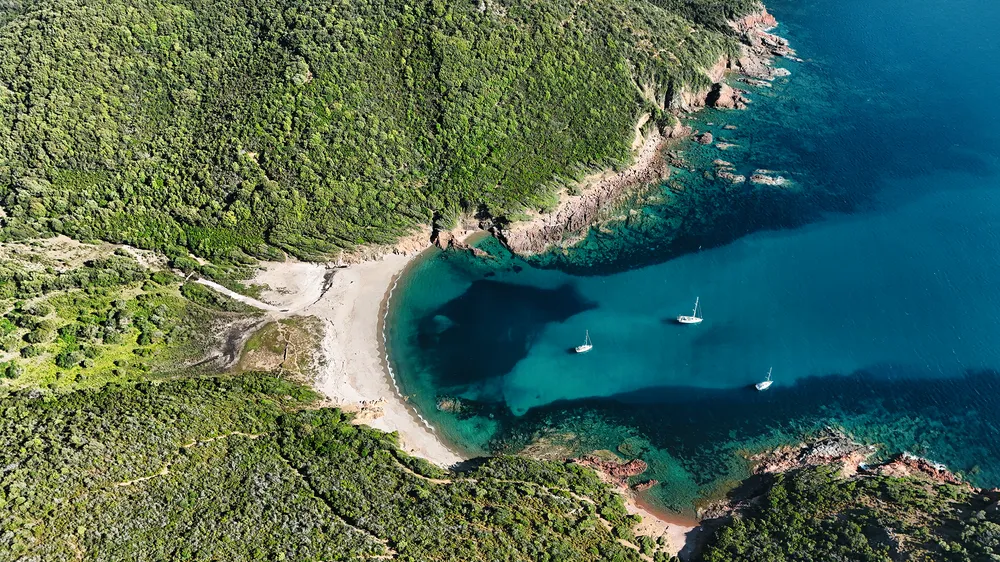
If you want to sail further south, you should study the weather forecast carefully, as the infamous Venturi effect in the Strait of Bonifacio can make itself felt quite far up and change the wind’s strength and direction. Around 20 nautical miles of untouched nature and a less rugged coastal landscape await us, which becomes brighter and brighter the further the sails carry us. A multitude of fabulous bays beckon here, hidden between granite piles with often suggestive shapes. Don’t resist the temptation and let yourself be enchanted by Cala di Conca, Cala Longa, Arbitru, Murtoli and all the others. Covered in fine white sand and gently lapped by crystal-clear water, they make any postcard look pale. The bay of Roccapina, where a stone lion looks out over the sea, is a must-see. If you sail around the central cliff, you can anchor 5 meters above the sandy bottom. At this point at the latest, you will fall for the often mocked Corsican lifestyle: cozy, enjoyable and relaxed. You let your soul dangle, discuss God and the world and, as the sun sets or the moon rises, you raise a glass of Muscat du Cap and toast to life: Pace è Salute!
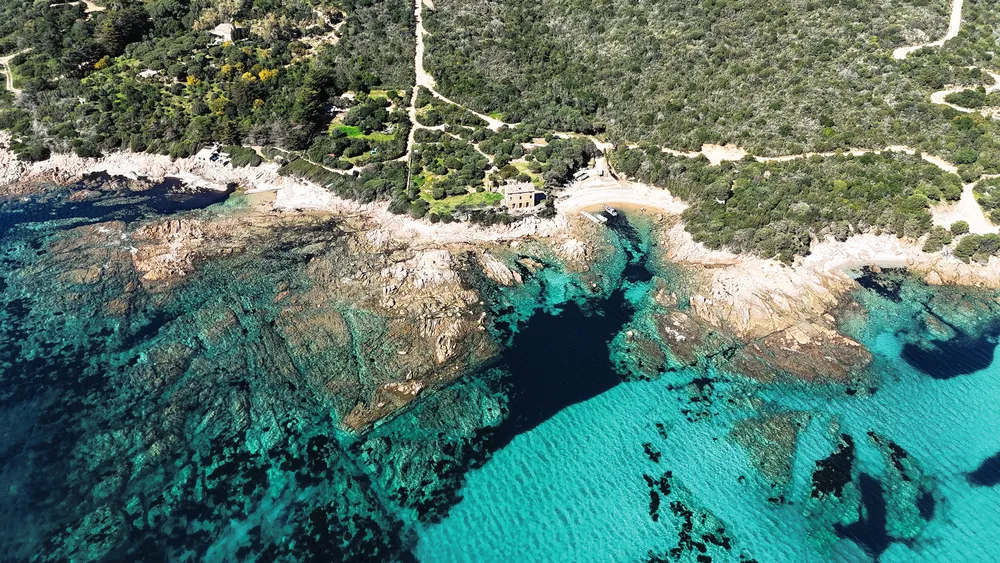
Practical information
In Galeria
Explore the Calcinaggia nature reserve in the Fangu Delta by kayak or SUP. In summer, several rental companies and guides offer their services at the mouth of the river, which can be easily reached on foot from the village. On the way there, you will pass the old arsenal from the 16th century, which is clearly visible on a rocky outcrop above the anchorage.
Visit to Girolata
Anchor in the idyllic bay of Tuara and set off on foot to Girolata. The well-signposted paths lead through an impressive landscape. Not in the mood for crowded restaurant terraces, fast check-in and tourist grub? Then pack a picnic and sit down on the village beach at sunset.
North coast of Capu Rossu
Moor off Ficaghjola and climb up the fishing path to the charming village of Piana. Stroll through the alleyways and stop off at the Hotel Roches Rouges. It is just a five-minute walk away on the Route des Calanques. In a lovingly maintained retro ambience, the hotel offers a breathtaking view of the Gulf of Porto. The dining room is a stunner! The Café de la Place in Arone belongs to the same family. They fulfill almost every wish of their guests. Wait until the afternoon hustle and bustle has died down and the motor yachts have left again, and then enjoy your dinner in peace and quiet. Be sure to make a reservation!
North coast of Capu Rossu
Anchor below the Genoese tower and visit the rock caves and tunnels on foot. Just follow the tourist boats, they will show you the way! If your boat is moored in the Cala di Palu, climb up to the tower. From the top you can see the whole of the north and south.
In Porto Pollo, on the Gulf of Valinco
Indulge in culinary delights at the Hotel du Golfe on the harbor or in the straw hut L’Infini on the large, wild beach of Abbartello. You are guaranteed to eat locally there! If you prefer to cook for yourself, you can buy lobster and fish from the local fishmonger. From the opposite village of Campomoro on the other side of the gulf, many paths lead to the coast to the rocks shaped by wind and weather. Take in the bizarre rock formations and listen to their stories. If possible, make a stop in Propriano on July or August 15. This is when the small village sets off a magnificent firework display that lights up the sky above your mast.
Children and adults love the spectacle!
If you would like to get to know the original Corsica together with the author on a yacht or catamaran, please contact her: kallisula-sailing@gmail.com, kallisulasailing.com
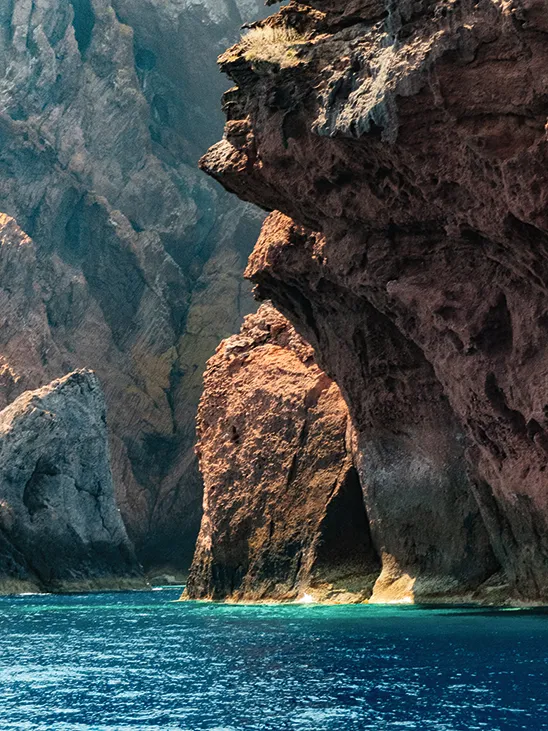
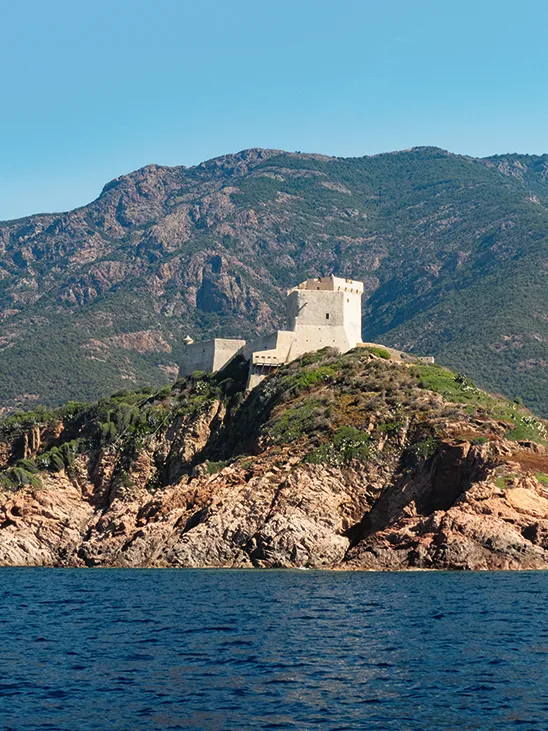
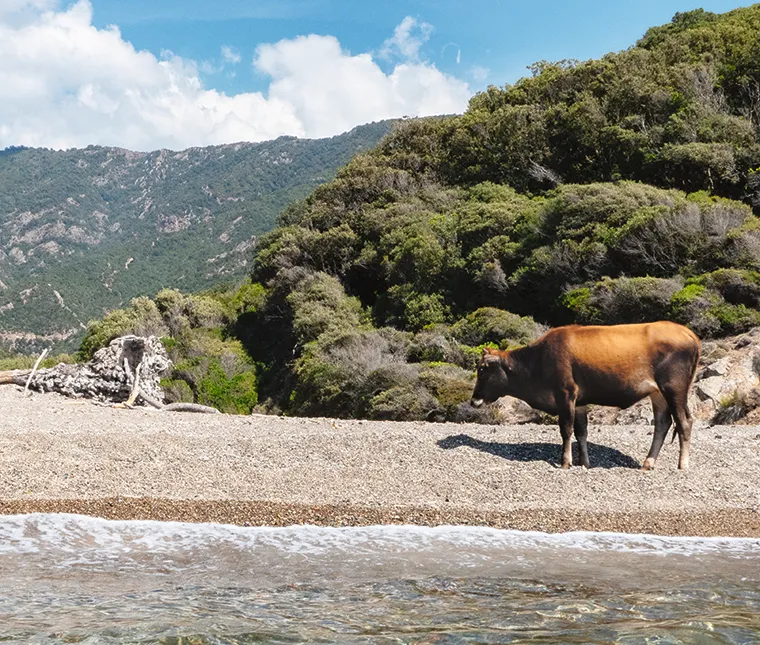
ON A CORSICAN BEACH
